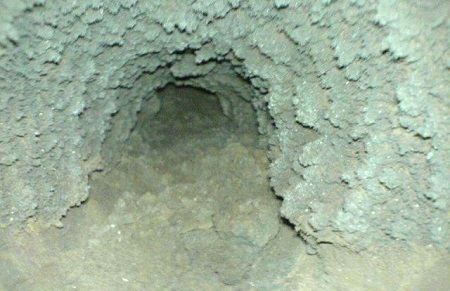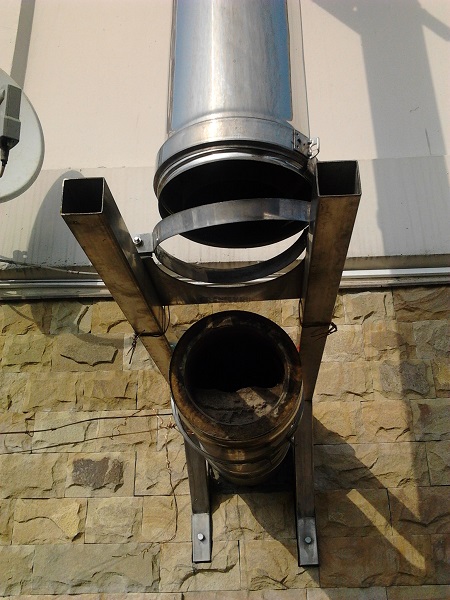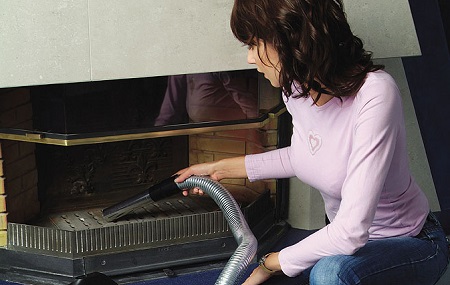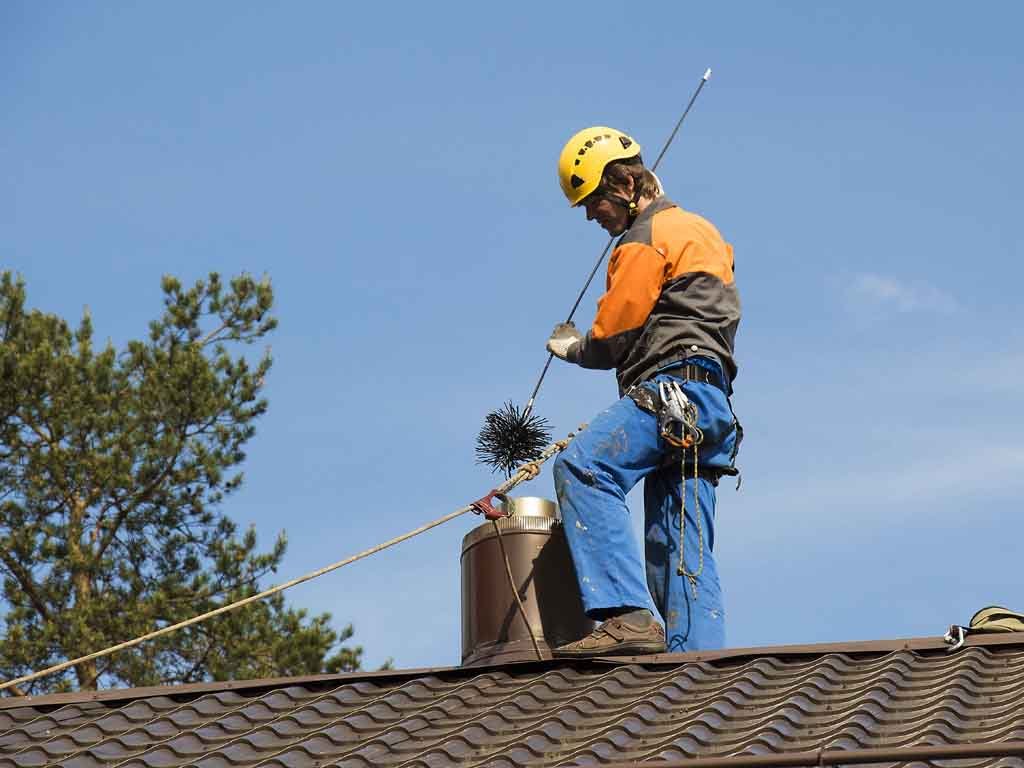A fireplace is a beautiful element of decor in any home. Yes, what’s beautiful there, its functionality cannot be overestimated. Long seats at the flames engulfed in flames in the circle of the closest people are familiar to every fireplace owner. But all the owners are well aware that for the correct and long-term functioning of the fireplace requires special care. And the main part requiring close attention in the fireplace is the chimney. It is the design, purity and integrity of the chimney that ensure the uninterrupted operation of the hearth. That is why the repair of chimneys and the timely cleaning of chimney pipes is so important.
Such a need becomes a real problem for fireplace owners who purchased it for the first time. How to clean the chimney pipe, if you don’t even know where to start? However, to cope with this complexity is quite simple. You just need to do everything right and follow the advice of professionals, which will be given below. And in order to get an even greater guarantee for quality cleaning of the chimney, you can entrust this problem to specialized people.
Content
And yet, where does the dirt come from?

As a rule, in fireplaces and stoves we use solid fuels. When any of them burns, ash and ash, oxides and resinous substances are formed as a result. All this rises up the chimney and safely settles on the walls of the chimneys. Accumulating in large quantities, soot narrows the lumen of the chimney, and therefore the exit of subsequent combustion products is difficult. As a result, we get a decrease in traction, smoke in the room during kindling, a decrease in the overall efficiency of your fireplace or stove. In especially neglected cases, the case may result in carbon monoxide poisoning.

One of the most serious problems of chimney pollution is the spontaneous combustion of the internal contents of the chimney. By the way, the burning temperature of this content often exceeds 1000 degrees Celsius. Due to the high temperature, sparks can occur, the chimney walls will crack, and the wood floors will ignite. That is why timely cleaning of the chimney is so important.
Timely cleaning. When and how often?
In order to know for sure when the next cleaning of your chimney should be done, it is necessary to carry out periodic checks of the chimney. This can be done independently and by resorting to the services of a professional specialist, in this matter, everyone decides for himself. Naturally, the master will clean the chimneys more efficiently.
It is best to conduct such a check once a year. To do less often is dangerous, but to do more often does not make sense, because the chimney is unlikely to have time to clog significantly in such a short period of time, but you will incur financial costs, and even spend valuable time on a useless task.

It is more convenient to conduct an inspection of the chimney with the help of a kettlebell on a rope, a flashlight and a mirror. Kettlebell allows you to identify blockages, and a mirror to detect cracks and poor-quality masonry.
The cleaning itself most often has to be done once every two years. Such a frequency is quite enough for the uninterrupted and safe functioning of the fireplace or stove.

In the event that the chimney has been inactive for some time, it is worthwhile to conduct a routine inspection before using the pipe.Especially relevant are such measures for fireplaces, which are used mainly in the heating period. In this case, the inspection should be done twice a year. Once before the heating season and the second - after its end, that is, in the fall and spring.
In some cases, full cleaning is not required. It is enough to remove twigs, branches and other garbage that have fallen into the chimney, and then enjoy the warmth of the hearth and the pleasant crackling of firewood in the fireplace. And how to clean the chimney pipe in more difficult situations, you will learn further.
"Underwater reefs." Flue gas obstruction

When carrying out work such as checking and cleaning the chimney, the following important points should be considered. Specialists always recommend that special attention be paid to such problem areas as the junction of the pipe and stove or fireplace, as well as to the bends of the smoke channels. It is there that soot and tar accumulate most of all. When you perform cleaning in these places, then install revision doors there, this will greatly facilitate your task.
Weak draft in the chimney can be caused not only by the presence of soot and the accumulation of resins in the pipes. Bird nests located in chimneys often create problems for fireplace owners. Sometimes it’s worth forgetting about a fireplace or a bathhouse for a couple of weeks so that the birds decide to settle in this place. In this case, the smell of burning manifests itself very significantly during kindling, soot constantly falls, and the smoke behaves quite differently from usual.
Expert advice and recommendations

During the inspection of the pipe, do not forget to pay attention to such trifles as traction, clean channels, the presence of cracks and fractures.
Among other things, experts recommend particularly asking about the following points when conducting a pipe inspection:
- Burning chimney pipe. If low-quality materials are used in the manufacture of the chimney, gaps may form in the pipe, which will sooner or later lead to a fire. This can also happen due to improper operation of the chimney.
- The formation of cracks and breakdowns in the tightness of the chimney. The cause of the problem, as a rule, is poor-quality materials, unprofessional work and design features of brick chimneys. This leads at best to smoke in the room, at worst - to fire and fire. Sometimes condensate, which is formed in the chimney, flows through the formed gaps and pollutes the walls of the room.
- The appearance of soot and tar on the inner surface of the chimney. The reason for this trouble lies in the low thermal insulation of the chimney, tarry wood or improper use. Pay attention to the fact that the soot fire is one of the main causes of a fire in the chimney. At high temperatures, this material is flammable, and fire can spread to the room.
- Too much condensation. The cause of the problem lies in the low temperature of the flue gases and poor thermal insulation of the chimney. A large amount of condensate leads to weakening traction and the appearance of a burning smell in the room, as well as the destruction of the chimney.
Chimney cleaning: folk and professional methods
For cleaning the chimney pipe, it is best to use methods that have been tested by time and not by one fireplace owner.
For example, there are folk methods for learning how to clean a chimney pipe:
- The first method is not only one of the solutions to the problem, but also an excellent prevention of soot prevention. To do this, on the firewood, when they burn, you need to sprinkle rock salt. In this case, soot will not accumulate in your chimney.
- Using the second method, soot and deposits will be removed from the walls of your pipe. To do this, you need to thoroughly melt the stove or fireplace and put there half a bucket (or bucket) of potato peelings. Their steam, consisting of selected starch, softens soot and dirt. Then they fall away.However, after this procedure, it will be necessary to clean the oven from potato pieces.
- One of the effective options is aspen firewood. You just need to burn them in your fireplace, and they will clean everything. But at the same time you need to be extremely careful, because if you strongly kindle aspen firewood, then your cleaning in the chimney will result in only more pollution of the house. White ash and flakes will fall on your roof from the chimney, which will cover the entire surface. Therefore, if you use this method, you must take all safety measures and act strictly according to the instructions.
- Also, before, people cleaned the chimney with turpentine. For those who don’t know, turpentine is such an oil made from conifers.
- Another way is burning birch wood. But before you burn them, you need to get rid of the bark.
In the event that you do not trust folk methods, then you can use modern methods of cleaning. Most often they are carried out using chemistry, but there are also classic options.
- One of the classic options for cleaning the chimney without chemicals is cleaning with a kettlebell, rope and brush. All this construction is connected and fixed among themselves. It is lowered into the pipe, the ruff cleans and collects dust, dirt and soot. This method is used by many chimney sweeps.
- You can also use chemical products with which the chimney can be cleaned efficiently and easily, but they have their drawbacks. Some of these things can stink terribly, while others will cut their eyes, and still others will suddenly be worthless. Therefore, before choosing a drug for cleaning the chimney, learn more about the company and the brand of goods that you are going to purchase. Read the composition, view reviews.
- You can clean the chimney with a brush. It is desirable that the brush has medium bristle bristles.
Safety precautions
Such a process as cleaning the chimney requires a thorough approach and knowledge of some safety rules. And it is quite natural that if you are going to do something yourself, then you need to prepare for this in advance. Take the necessary actions for safety, thereby neutralizing yourself and your loved ones. When a chimney is being cleaned, all safety rules must also be followed to successfully complete the process.
First of all, prepare all the necessary equipment and uniforms in order not to accidentally injure yourself. Read all instructions carefully and study the cleaning steps. After such a procedure, you can proceed to the cleaning itself or examination.
But what about the fireplace?

Do not forget that the fireplace requires careful personal care. Removing ash and thoroughly cleaning the fireplace twice a year will allow you to avoid many problems associated with both pollution of the surface of the fireplace and the chimney.
Previously, turpentine or baking soda was used to clean the fireplace. The outer marble surface was carefully rubbed with lemon slices, previously wrapped in cloth. Today there are a large number of special tools to combat such pollution.
In order to clean a rough surface, it is better to use a brush, and special means for cleaning windows.
And let your fireplace shine and shine with purity, and the flame in it evenly illuminates your home and gives warmth to your family day after day and year after year.





Alas, no comments yet. Be the first!